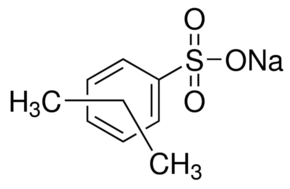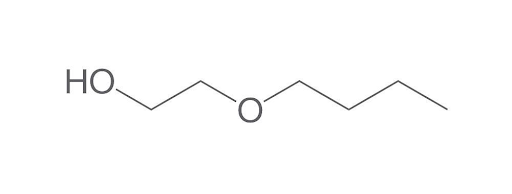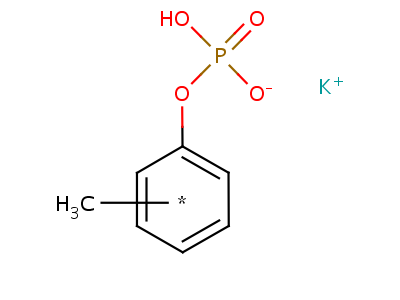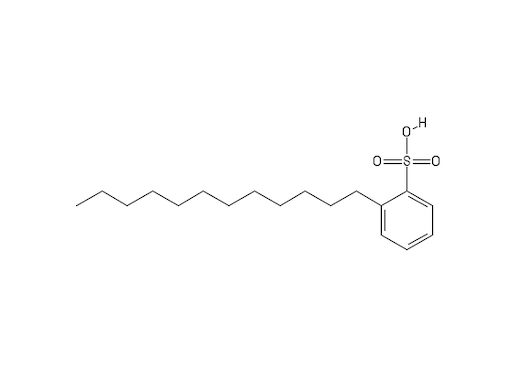
What Makes Clean-X Clout A Great All-Purpose Degreaser
Let me take you behind the screen to reveal each component.
What’s in it?
Sodium Xylene Sulfonate (SXS) :

This component is widely used in the cleaning industry including consumer care industry like shampoos. SXS is readily biodegradable. SXS is typically used to reduce viscosity and cloud point. SXS also helps dissolve other molecules in water and readily and thereby acting as a hydrotrope. SXS helps the cleaning detergent spread across any surface and helps with more efficient cleaning.
Sodium Tripolyphosphate (STPP):

Commonly known as STPP around many industries including detergents, food preservation, paper, pigments and textiles. This chemical is particularly useful in the cleaning industry because of its role as a builder. A builder is nothing but a water softener. Hard water contains high amounts of dications such as Mg2+ and Ca2+ . These ions bind with the surfactants in the detergent mixture and decrease the cleaning efficiency. STPP becomes a sacrificial ion binder for Mg2+ and Ca2+ and prevents them from killing the surfactant.
Potassium Hydroxide (KOH):
Most commonly known as lye or caustic potash, potassium hydroxide’s use in various industries is very well documented. KOH’s smaller molecular size perfectly suited to cut across any surface that caked oil and grease. Because of that many industrial-grade soaps contain potash. High amounts of Potash in detergent is extremely effective when cleaning commercial kitchen exhausts. All sorts of animal fat gets accumulated in the kitchen exhausts. Potash breaks down these fats into easily digestible molecules and helps the cleaning process. Due to its highly alkaline/corrosive nature, soft alloy surfaces like aluminum, copper, and brass should avoid using detergents with high amounts of potash. However, Steel, Cast iron and stainless steel surfaces used in most commercial kitchens can greatly benefit from high amount potash detergents.
Polyoxyethylene nonylphenol (NP-9/NPE):

Polyoxyethylene nonylphenol (NP-9/NPE) is a nonionic surfactant. A surfactant acts on a surface to lower the surface tension between two liquids or between liquid/solid interfaces. If you are cleaning a hard surface with caked oil, a surfactant like NP9 reduces the surface tension between cleaning liquid and emulsifies the caked oil into water. NP-9 is especially effective because of the non-ionic nature. Because of the non-ionic nature NP-9 cannot form chelates (bonds) with dications like Mg2+ and Ca2+. It also produces excellent foam that aids cleaning as well.
Ethylene glycol monobutyl ether (EGBE) (2-Butoxyethanol) (EB)

2-Butoxyethanol commonly known as EB in the cleaning industry. Since EB contains both a polar and nonpolar end group, it can act as a surfactant as well. Because of this nature, EB can dissolve both water-soluble and oil-soluble substances. EB is also approved by the FDA to be used as a direct and indirect food additive. Eb is also sold under various names like, Butyl Cellosolve ( Union Carbide ), Butyl Oxitol ( Shell Chemical ), Dowanol EB ( Dow Chemical ), Ektasolve EB ( Eastman Chemical ), Glycol Ether EB ( Oxy Petrochemicals ), 2-Butoxyethanol, and Ethylene Glycol Monobutyl Ether. EB is most commonly used in glass cleaners and all-purpose spray cleaners.
Sodium Metasilicate Pentahydrate:

Sodium metasilicate is formed by reacting Silica with Sodium oxide. Sodium metasilicate can be available in three different forms-Sodium metasilicate anhydrous, Sodium metasilicate pentahydrate(SMP), Sodium metasilicate nonahydrate. SMP acts as a protective shield for metal surfaces by forming a very thin layer of film. This hinders the strong alkali from etching the metal away while helping the cleaning process. When used in combination with surfactants like NPE, SMP can neutralize acidic soil, typically inorganic soils like sand and salt. SMP also helps break down crudded up soil into finely divided particles and helps suspend oily and greasy soil into wash water. SMP also helps balance water hardness by taking the hard cations like Mg2+ and Ca2+ out.
Sodium gluconate:

Sodium gluconate is the salt of gluconic acid. Gluconic acid is produced by fermentation of Glucose. It is non-corrosive, non-toxic, and readily biodegradable. Sodium gluconate is heavily used in the food industry as an additive. Sodium gluconate has excellent chelating power that takes out hard ions like calcium, iron, copper, aluminum, and other heavy metal ions from water. Sodium gluconate can be used to make various cleaning liquids like dish washing, industrial cleaners, laundry care, and surface care. Sodium gluconate is particularly helpful in breaking down scale, milkstone, and beerstone. Sodium gluconate protects stainless steel from caustic-based cleaners.
Phosphate Polyether Ester H66:

Triton-H66 or DePHOS H-66-872 or Rhodafac® H66 is a very well known anionic surfactant. H66 ‘s chemical name is Phosphate polyether ester. H66 works as an excellent hydrotrope. Hydrotrope’s role is very similar to a surfactant but the principle of cleaning mechanism of hydrotrope is slightly different. A hydrotrope makes the fatty grease soluble in water. This also helps the cleaning formulations to be highly concentrated. The phosphate ion in H66 helps the high aqueous stability while smaller non-polar end group helps the hydrophobic compounds to stay in solution.
DodecylBenzeneSuflonic Acid:

Dodecylbenzene Sulfonic Acid is a thick, light yellow to brown liquid that is soluble in water. DDBSA is readily biodegradable. As an extremely versatile cleaning agent,
